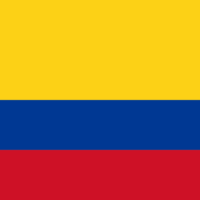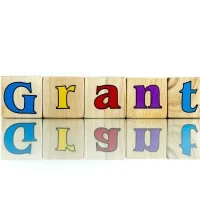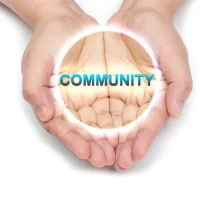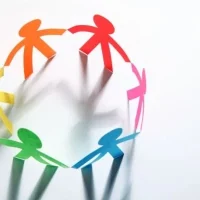Gamification is a powerful strategy that leverages game design elements in non-game contexts to engage and motivate individuals. In the realm of digital fundraising, this approach can transform the way NGOs connect with their supporters, making the act of giving not only impactful but also enjoyable. By incorporating elements such as points, badges, leaderboards, and challenges, organizations can create a more dynamic and interactive experience for donors.
This method taps into the psychological triggers that drive human behavior, such as competition, achievement, and social interaction, ultimately leading to increased engagement and higher donation rates. The concept of gamification is rooted in the understanding that people are more likely to participate in activities that are fun and rewarding. In the context of fundraising, this means that by turning the donation process into a game-like experience, NGOs can encourage more people to contribute.
For instance, a campaign might involve setting specific fundraising goals that unlock rewards or recognition for donors as they reach certain milestones. This not only incentivizes contributions but also fosters a sense of community among supporters who are working towards a common goal. As organizations begin to embrace gamification, they can create a more vibrant and enthusiastic donor base.
Incorporating Game Elements into Your Fundraising Strategy
Designing a Gamified Experience
Once you have a clear understanding of your audience’s preferences, you can design a gamified experience that aligns with their interests. For example, you might introduce a points system where donors earn points for every dollar contributed, which can then be redeemed for exclusive merchandise or experiences related to your cause.
Creating Engaging Challenges
Another effective strategy is to create challenges or missions that encourage donors to engage with your organization beyond just monetary contributions. This could involve tasks such as sharing your campaign on social media, recruiting friends to donate, or participating in community events. By framing these activities as challenges, you can foster a sense of accomplishment and camaraderie among participants.
Recognizing Donor Engagement
Additionally, consider implementing tiered rewards that recognize different levels of engagement, ensuring that all donors feel valued regardless of their contribution size. This approach can help create a sense of community and encourage donors to continue engaging with your organization.
Choosing the Right Gamification Tools and Platforms
Selecting the appropriate tools and platforms for your gamified fundraising campaign is crucial for its success. There are numerous software solutions available that specialize in gamification features tailored for nonprofits. When evaluating these options, consider factors such as ease of use, integration capabilities with your existing systems, and the specific gamification elements they offer.
Platforms like Classy, Donorbox, and GiveLively provide various features that can enhance your fundraising efforts through gamification. Moreover, it’s important to choose tools that allow for customization to reflect your organization’s branding and mission. A well-branded experience can significantly enhance donor engagement and loyalty.
Look for platforms that enable you to create personalized donor journeys, where supporters can see their impact in real-time through dashboards or progress trackers. This transparency not only builds trust but also encourages ongoing participation as donors witness their contributions making a difference.
Creating Engaging and Interactive Fundraising Content
The content you create for your gamified fundraising campaign plays a pivotal role in capturing the attention of potential donors. Engaging content should be visually appealing and easy to understand while clearly communicating the mission and goals of your organization. Consider using storytelling techniques to illustrate the impact of donations through real-life examples or testimonials from beneficiaries.
This emotional connection can motivate donors to participate actively in your campaign. In addition to compelling narratives, interactive content such as quizzes, polls, or challenges can further enhance engagement. For instance, you might create a quiz that educates participants about your cause while allowing them to earn points for correct answers.
This not only informs potential donors but also makes them feel involved in the process. Incorporating multimedia elements like videos or infographics can also enrich the user experience, making it more likely that supporters will share your campaign with their networks.
Leveraging Social Sharing and Competition
Social sharing is a critical component of any successful gamified fundraising campaign. By encouraging participants to share their achievements on social media platforms, you can significantly expand your reach and attract new donors. Implementing features such as shareable badges or personalized donation pages can motivate supporters to showcase their involvement publicly.
This not only amplifies your campaign’s visibility but also creates a sense of community among donors who are excited to share their contributions. Competition can also be a powerful motivator in gamified fundraising. Consider organizing friendly competitions among donors or teams where participants can track their progress against one another on leaderboards.
This element of rivalry can drive engagement as supporters strive to outdo each other while contributing to a common cause. Additionally, offering prizes for top performers or teams can further incentivize participation and foster a spirit of camaraderie among supporters.
Tracking and Analyzing Gamification Metrics
To gauge the effectiveness of your gamified fundraising campaign, it is essential to track and analyze relevant metrics. Key performance indicators (KPIs) such as total funds raised, number of participants, engagement rates, and social shares can provide valuable insights into what aspects of your campaign are resonating with donors. Utilizing analytics tools integrated into your chosen platform can help you monitor these metrics in real-time, allowing for quick adjustments if necessary.
Moreover, consider conducting surveys or feedback sessions with participants to gather qualitative data on their experiences. Understanding what motivated them to engage with your campaign can inform future strategies and help refine your approach to gamification. By continuously analyzing both quantitative and qualitative data, you can create more effective campaigns that resonate with your audience and drive greater impact.
Rewarding and Recognizing Donors for Their Contributions
Recognizing and rewarding donors for their contributions is vital in maintaining engagement and fostering loyalty within your supporter base. Implementing a tiered rewards system can ensure that all donors feel appreciated regardless of their contribution size. For example, you might offer small tokens of appreciation such as thank-you notes or social media shout-outs for lower-tier donations while providing exclusive experiences or merchandise for larger contributions.
Additionally, consider hosting recognition events or virtual celebrations where donors can come together to celebrate their collective impact. These events not only serve as an opportunity to express gratitude but also strengthen the sense of community among supporters. By consistently acknowledging the efforts of your donors, you cultivate an environment where individuals feel valued and motivated to continue supporting your organization.
Case Studies and Examples of Successful Gamified Fundraising Campaigns
Several organizations have successfully implemented gamification strategies in their fundraising campaigns, yielding impressive results. One notable example is Charity: Water’s “September Campaign,” which encourages supporters to create personal fundraising pages and compete against one another for prizes based on their fundraising totals. This approach not only increased donations but also fostered a sense of community among participants who shared their progress on social media.
Another inspiring case is the “Ice Bucket Challenge,” which went viral in 2014 as a social media-driven fundraising campaign for ALS research. Participants were challenged to dump ice water over themselves and donate to the cause while nominating others to do the same. The combination of competition, social sharing, and engaging content led to unprecedented levels of awareness and funding for ALS research.
These examples illustrate the potential of gamification in driving engagement and increasing donations for nonprofit organizations. By learning from these successful campaigns and adapting their strategies to fit your organization’s unique mission and audience, you can create impactful fundraising initiatives that resonate with supporters while making a meaningful difference in the communities you serve.








































